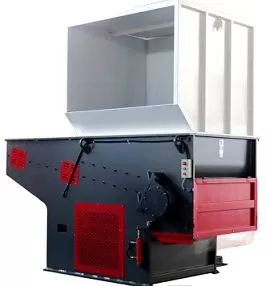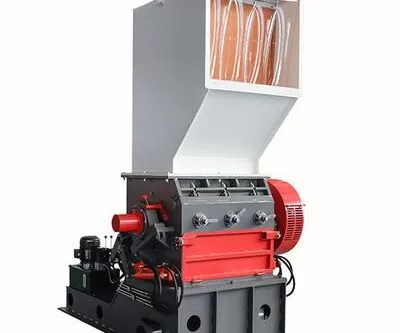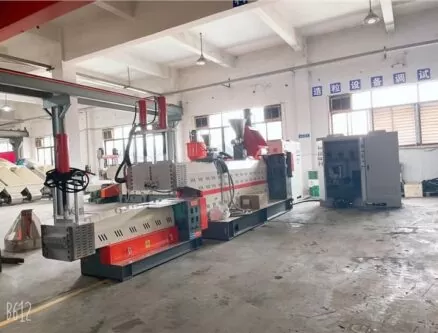Recycling plastic sounds like a great idea—until you’re staring at a mountain of bottles wondering, Where on earth do I even start? I get it. I’ve been there. At Amige, I’ve helped folks transform their plastic chaos into profitable order. The good news? You don’t need a spaceship. But you do need the right tools—and a good sense of humor wouldn’t hurt either.
You’ll need a plastic shredder, a washer, a dryer, a granulator, an extruder, and sometimes even a pelletizer or agglomerator—depending on the plastic type. Think of it like building a superhero team. Each machine has its superpower. Skip one, and the whole mission might fail.
Now that you know the team lineup, let’s break it down like a bottle in a shredder—quick, clean, and satisfying.

Why does plastic recycling need so many machines?
Plastic isn’t a one-size-fits-all material. You’ve got PET bottles, HDPE containers, LDPE films, PP caps… the list goes on. Each one needs a slightly different approach. That’s why our recycling line at Amige is modular—like Lego, but for grownups with an environmental conscience.
You start with collection and sorting. Sounds simple, but it’s a full-time job. You can’t shred yogurt lids with PVC pipes—unless you’re aiming for disaster. That’s why sorting technology—manual or automated—is critical.
What’s the first machine I should get?
That’d be a plastic shredder. It’s your frontline warrior. Big, loud, and ready to chop plastic into smaller, more manageable pieces.
There are single-shaft, double-shaft, and even four-shaft shredders. For most standard operations, a single-shaft is a good starting point. Want to go heavy-duty? Try a double-shaft like the ones we manufacture at Amige—capable of eating car bumpers for breakfast.
Do I need to wash the shredded plastic?
Absolutely. Dirty plastic = useless plastic. That’s why friction washers and hot washers are your best friends.
After shredding, the plastic enters a washing tank. Dirt, labels, and oil get removed. For greasy, food-grade plastic? Hot water and detergent are your go-to combo.
Then comes drying. You can’t extrude soggy flakes. Use a centrifugal dryer or thermal dryer. At Amige, we’ve built integrated washer-dryer combos to save space and boost efficiency.

What’s a granulator, and do I need one?
A granulator is like a shredder’s meticulous cousin. After washing and drying, granulators cut plastic into even smaller flakes—ideal for reprocessing.
Why does this matter? Because uniform size improves melting consistency during extrusion. Plus, many buyers want high-quality granules. So yes, if you’re going commercial, you need one.
What happens after granulation?
That’s where things get hot—literally.
You feed your clean flakes into an extruder. The plastic melts and forms spaghetti-like strands. These are then cooled in a water trough and cut into pellets using a pelletizer. Some systems use strand pelletizers, others use die-face cutters. Either way, the end goal is pellets—AKA the currency of plastic reprocessing.
And don’t forget the agglomerator. It’s not mandatory, but it helps convert soft films and foams into dense chunks, making them easier to feed into an extruder.
Can I start small and scale up?
Heck yes. You don’t need a million-dollar plant on day one. Start with a compact line:
- A small shredder
- A friction washer
- A basic extruder
From there, scale as your volume grows. At Amige, we’ve helped startups launch in garages and later grow into full-scale factories. The key? Smart planning and modular machinery.

How do I choose the right machines?
Great question—and one I answer every week.
Here’s the checklist I use when consulting with clients:
- What type of plastic? PET, HDPE, LDPE, PP… each needs different temperatures, blade types, and speeds.
- How much volume per day? Don’t overspend on a 1-ton/hour line if you’re only processing 300 kg/day.
- End goal? Selling flakes, pellets, or using recycled plastic in-house? That changes everything.
- Power & water availability? Many machines consume serious energy and need steady water supply for cooling.
Still not sure? Shoot me a message. I’ve been doing this longer than some plastic bottles have existed.
Is automation worth the cost?
Yes, if you’re serious about efficiency and consistency.
A semi-automated or fully automated recycling line can reduce labor costs and improve output. Features like conveyor-fed shredders, PLC control panels, and moisture detection systems are becoming standard. And guess what? They save money in the long run.
Can recycled plastic compete with virgin plastic?
With the right equipment and process? Absolutely.
In fact, in industries like construction and textiles, high-quality recycled plastic is in huge demand. But it all starts with clean input and consistent processing.
The catch? Quality control. Contaminated input = poor pellets = low resale value. That’s why investing in proper machinery isn’t just a technical decision—it’s a financial one.
What else do I need besides machines?
Don’t forget the “soft stuff”:
- Skilled workers or good training (we offer this too)
- Proper ventilation and safety systems
- Licensing and compliance paperwork
- A market or buyer for your recycled output
Also, consider a label remover, metal detector, and silo storage system if you’re running a larger operation. It’s the little things that make big systems run smoothly.

How much does it all cost?
Short answer: It depends.
A basic mini recycling line can cost around $30,000. A full-scale industrial plant? Easily $500,000 or more. That’s why I always tell clients: “Don’t buy everything—buy what you need first.”
At Amige, we customize lines based on budget, output goals, and space. No cookie-cutter solutions. Just a CEO who’s obsessed with building the world’s most efficient plastic munchers.
Conclusion
Recycling plastic isn’t magic. It’s mechanical. With the right machines—and a smart plan—you can turn waste into value. I’ve seen it happen. Many times. Maybe next, it’ll be your story I tell.
